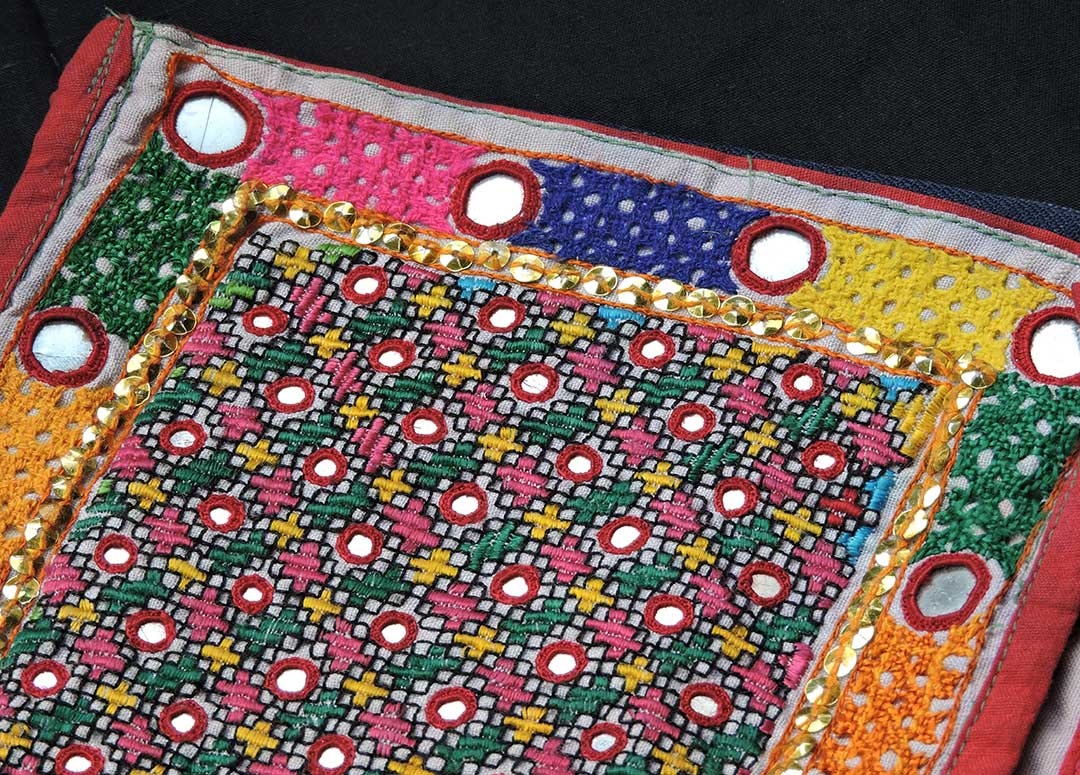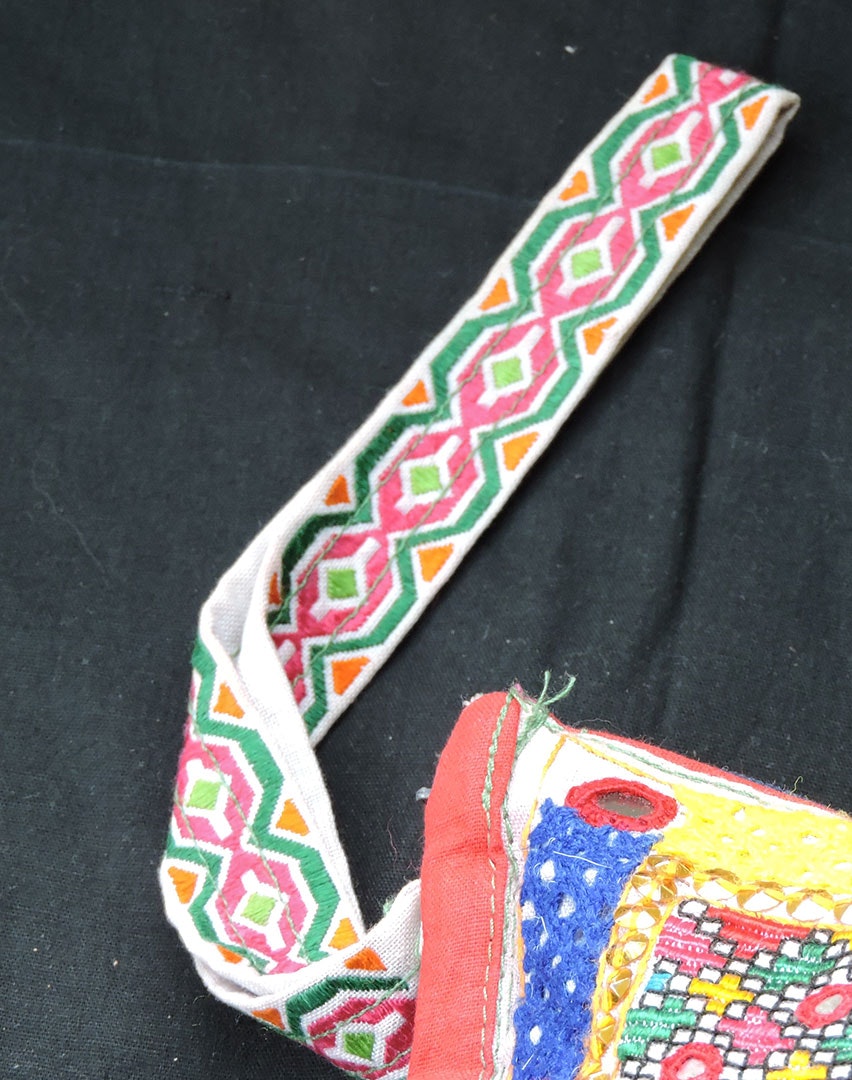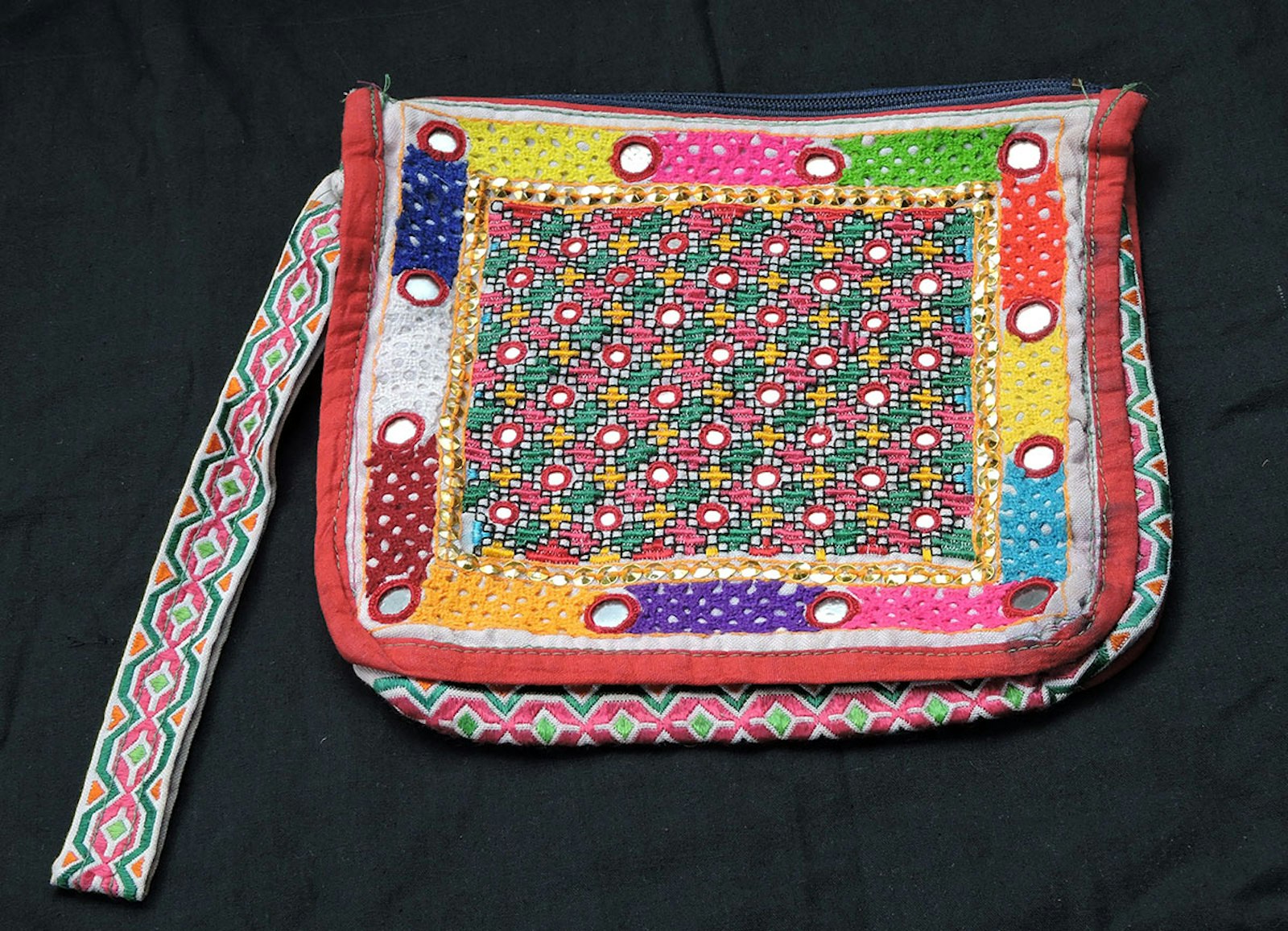In an earlier post on bagchi dowry bags, I wrote about how small bags filled with gifts are traditionally given during the wedding ceremony. Today, traditional bagchi have been replaced by store-bought leather wallets and purses. The bag shown here bridges the gap between the traditional and modern and is inspired by current-day wallets and purses in shape and style, but it also has embroidered embellishments, which are a nod to the rich needlework of the past.
This is another of those pieces that I acquired at a market, and it was sold to me by a Kutchi embroidery lady’s husband. The bag had been made by his sister. I am not sure whether it was her dowry piece, made for her husband, or made for her daughter’s trousseau, but like many women wishing to cash in on extra textile pieces in their possession, she had given it to her brother to sell in Delhi. I was shown the piece and fell in love with it.
The bag is in the form of a wayfarer’s pouch and provides enough space to hold toiletries or other similar items. Its shape is more three dimensional than traditional bagchi for it has more depth and height to it, expandable sides, a little handle, and like many modern purses, it closes with a plastic zipper. It measures 7½ x 6 inches (19.1 x 15.2 cm), 2 inches (5.1 cm) deep, and the handle is 7 inches (17.8 cm) long.

Detail of the of the kharek and sindhi taropa embroidery stitches. The bag is the same on both sides, and it is difficult to achieve such symmetry given the intricacy of the design.
However, this bag retains the colorful elements of traditional bags with its exquisite embroidery. It was lovingly made for someone special and has been embroidered using three types of stitches. The center is embroidered in very fine kharek, or khareek, embroidery. Kharek in local dialect means dates, which is what the stitches resemble, and this style of needlework came to India with the Sodha Rajputs who migrated from the Tharparkar region in the Sindh province of Pakistan, during the Indo-Pakistani War of 1971. The bag’s embroidery is very intricate with tiny mirrors in between the embroidery, and the kharek stitching around the mirrors is so fine that one can hardly see it. The sides of the bag, the expandable portion, and the handle are decorated using suf embroidery, which is practiced in the Kutch region of Gujarat in western India. This bag looks the same on both sides, and the sides of the center piece on the front and back of the bag are finished using the sindhi taropa, or hurmucho, which is also a Kutch style of needlework.

Detail of the suf embroidery on the handle.
This textile example from my collection shows the evolution of dowry items in the Kutch region. The traditional-shaped pieces are being replaced by modern-day versions. While the bag’s shape may have changed, the rigor of the embroidery is maintained, and the tradition thrives. This bag is an interesting progression of the bagchi I wrote about previously, and it documents how dowry items change with time.
Chitra Balasubramaniam writes, collects, experiments with textiles, and follows her passions by writing about food, travel, and heritage. She dabbles with stock-investment analysis and research. She also runs a small travel guide at visitors2delhi.com. Find her on Instagram as @visitors2delhi.

